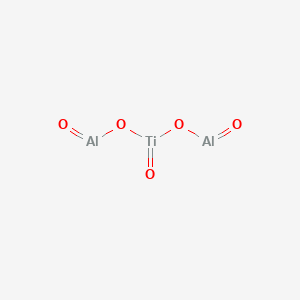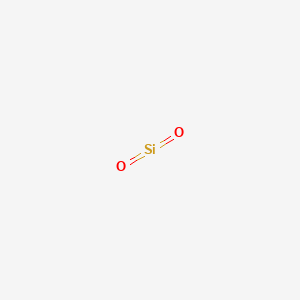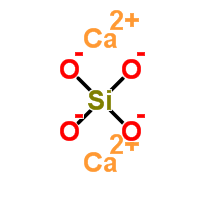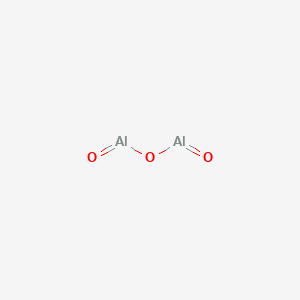
Aluminum Titanate (Al2TiO5)
The special feature of aluminum titanate (Al 2 TiO 5 ) is its excellent thermal
shock resistance. Components made of this material can withstand even the
most abrupt temperature changes of several hundred degrees without damage,
although they have low strength.
The good thermal shock resistance is a result of the very low thermal
expansion and a certain amount of porosity in the microstructure. This
ceramic material’s poor wettability with molten metals also makes it ideal
for use in foundry technology and metallurgical melting .
Properties of Aluminum Titanate (Al2TiO5)
Excellent thermal shock resistance
Max. operating temperature: 900 °C (in some cases could reach 1100°C
but only for a short period of time)
Very low thermal expansion (<1×10 -6 K -1 between 20 and 600°C)
High thermal insulation (1.5 W/mK)
Low Young’s modulus (17 to 20 GPa)
Good chemical resistance
Poor wettability with molten metals
Longer service life, can be exposed to molten metal without pre-heating
Energy-efficient process, increased process reliability, reduced freeze-
offs and improved yield levels
Prevents metal adhesion, simplifies cleaning and increased machine
availability
Increased service life, does not contaminate the melt hence enhances
product quality plant efficiency
Low Thermal Conductivity
Aluminum titanate has outstanding properties that make it ideally suited for
applications involving molten aluminum, including complete resistance to
wetting by aluminum alloys, total gas impermeability, and a very low thermal
expansion coefficient. This material offers a longer service life and higher
reliability when compared to cast iron, calcium silicate or fused silica
components. All riser/stalk tubes are 100% leak-down tested.
Feeders / Risers / Stalk for low pressure die casting Dosing tubes
Dosing tubes
Ceramic containers
Sprue bushings, Cups and Connectors
Casting spouts, Flow rods, Retainer rings
Nozzles, Crucibles
Tap hole plugs and rings
Customised special components

Fused Silica
Fused Silica
The fused silica of Techceramic-M has low coefficient of thermal
expansion, thermal shock resistance, good chemical resistance.
It has good dimensional stability and excellent refractory capabilities
needed for products like launders, stoppers, baffle plates.
Calcium silicate
Techceramic-M’s calcium silicate has high-insulating properties with
density lower than 1,5 gr/cm3 and is non-wetting by aluminum alloys.
It is produced in cylindrical, conical configurations, which are
symmetric depending on client’s wish.
It is excellent for producing insulation bushings, intermediate tubes,
working in sprue systems for die casting aluminum alloys.

Calcium silicate
Techceramic-M’s calcium silicate has high-insulating properties with
density lower than 1,5 gr/cm3 and is non-wetting by aluminum alloys.
It is produced in cylindrical, conical configurations, which are
symmetric depending on client’s wish.
It is excellent for producing insulation bushings, intermediate tubes,
working in sprue systems for die casting aluminum alloys.

Alumina
Alumina is one of the most widely specified, general-purpose technical ceramics.
All aluminas are very hard and wear resistant, with high compressive strength even
against extreme temperatures and corrosive environments. Aluminas are also excellent
electrical insulators and are gas tight.
Commercially available grades range from 92% up to 99.95% with the higher purity
generating higher hardness. It is possible to machine alumina using diamond grinding
techniques. Polishing is also possible, with the degree attainable affected by alumina
grain size and production technique.
Properties of Alumina/Aluminum Oxide (Al2O3)
Very good electrical insulation
Construction material
Moderate to extremely high mechanical strength
Very high compressive strength
High hardness
Moderate thermal conductivity
High corrosion and wear resistance
Good gliding properties
Operating temperature without mechanical load 1,000 to 1,500°C.
Bioinert and food compatible
Acids resistance
Advantages of alumina ceramics
High mechanical strength;
High resistivity;
Good electrical insulation performance;
High hardness;
Resistant to acids;
The density of alumina ceramics is 3.6g/cm3, which is only half of the density of the
steel, which can greatly reduce the equipment load;
High melting point, anti-corrosion, melting point 2050℃, can resist the erosion of molten
metals such as Be, Sr, Ni, Al, V, Ta, Mn, Fe, Co. It also has high resistance to erosion of
NaOH, glass and slag;
Alumina ceramics have excellent chemical stability, and do not chemically react with
many complex sulfides, such as phosphides, arsenides, chlorides, nitrides, bromides,
iodides, oxides, sulfuric acid, hydrochloric acid, nitric acid, and hydrofluoric acid.
Typical alumina applications include:
Seal rings
Blood seals and valve
Ballistic armour
Threadguides
Wear components

Zirconia (Zro2)
Zirconia (Zro2) ceramic offers a combination of high hardness, wear and corrosion
resistance, while exhibiting one of the highest fracture toughness values among all
ceramic materials.
General Properties
Use temperatures up to 1500°C
Sintered to full density for a pore free structure
No compromise between bending strength, hardness and fracture toughness
Remarkably high fracture toughness and impact resistance while maintaining
above average values for bending strength and hardness
Toughening by crack deflection provided by a unique microstructure in a partially
stabilised zirconia matrix
Applications of Zirconia
Zirconia is used in applications typically in the metal forming industry
As the material, zirconia is wear resistant and inert and can therefore be utilised in areas
where traditional metallic systems would not be able to function. In sub-sea systems
where metallic systems would corrode, zirconia excels.
Zirconia is used as an oxygen sensor due to the free charge carriers within the structure.
Specific grades of zirconia can become electrically conducting at high temperatures due
to the energy imputed into the material which liberates the charge carriers to carry the
current.
Zirconia has great wear resistance, which combined with the high fracture toughness
properties makes it an ideal material for pumps.
